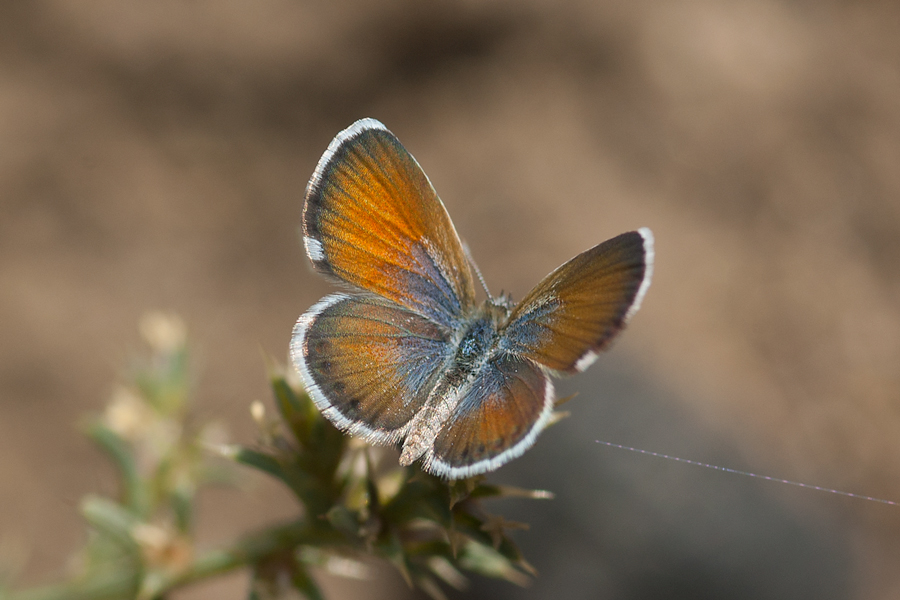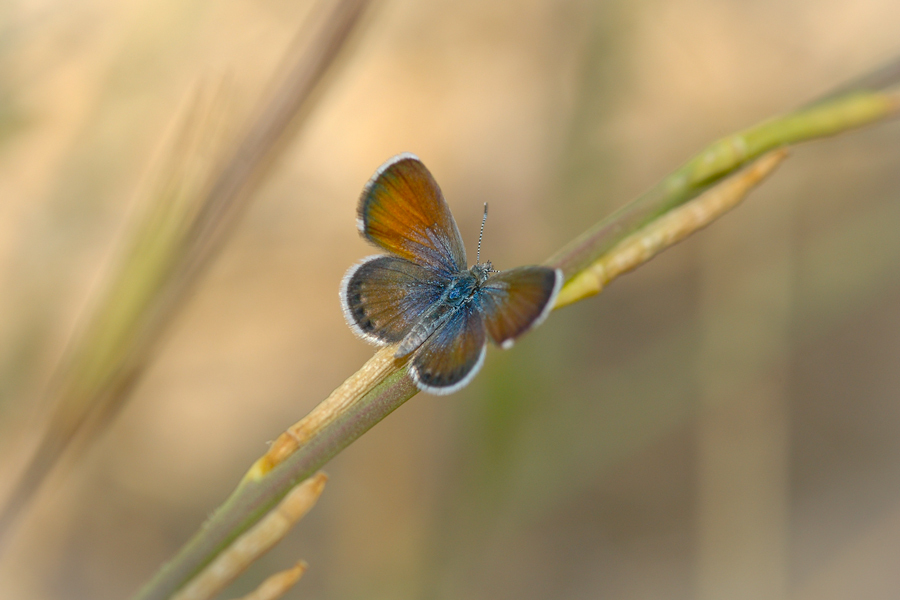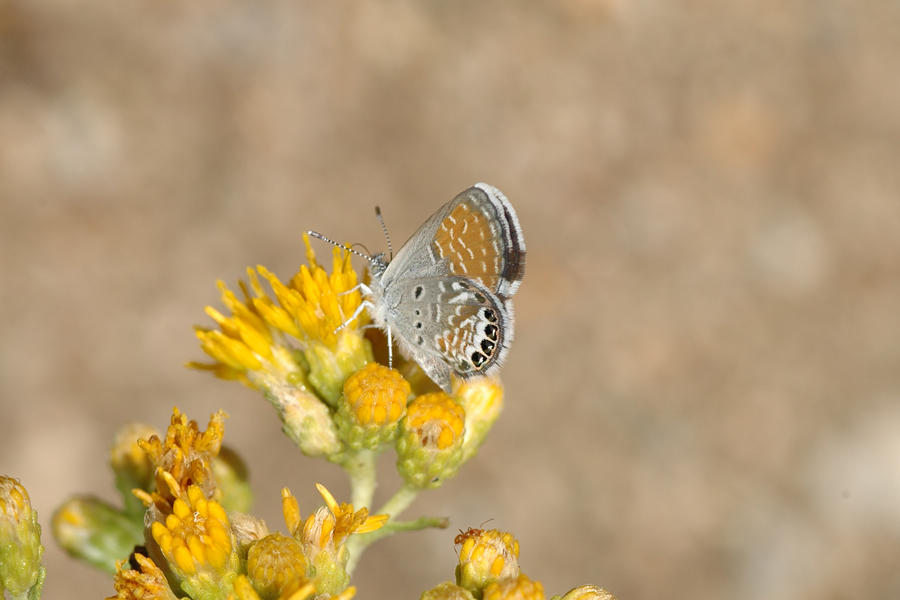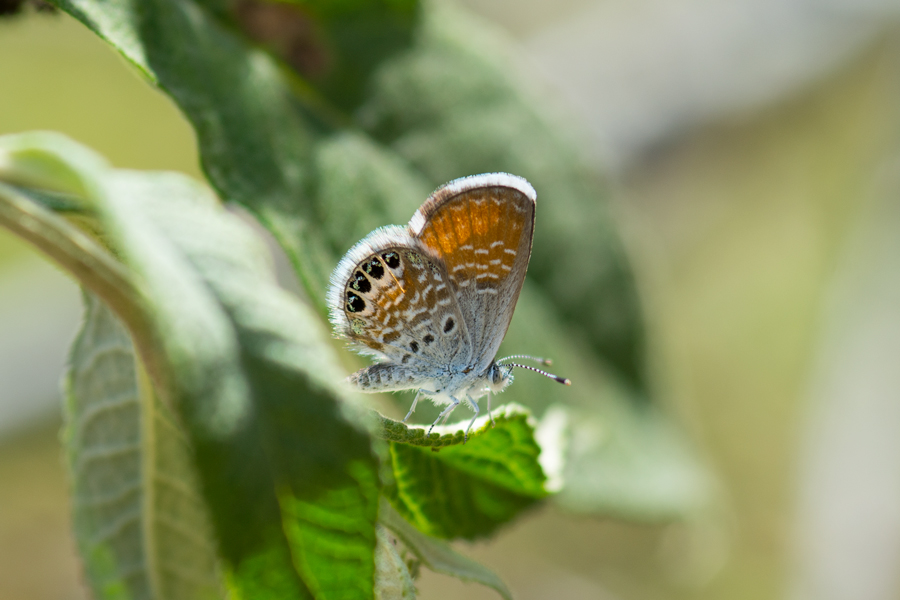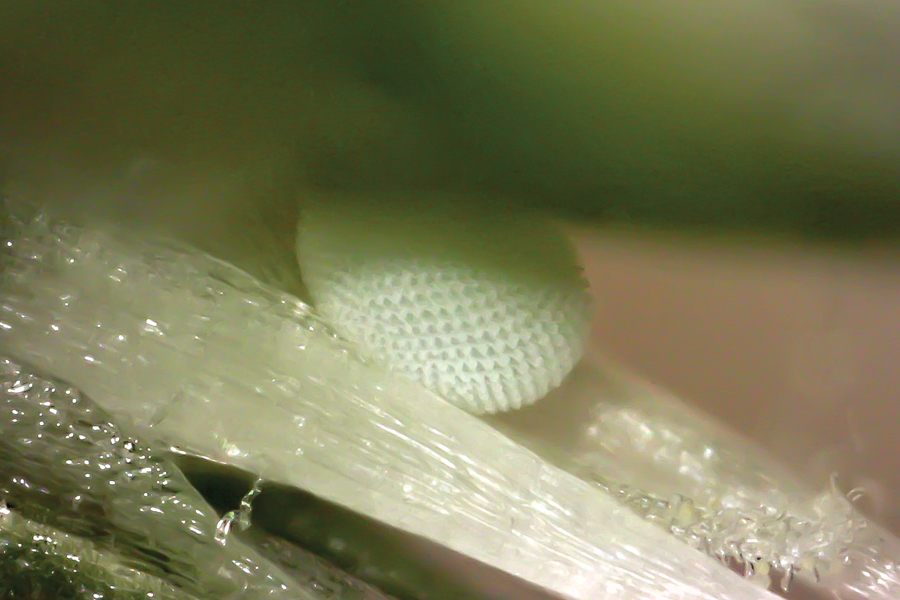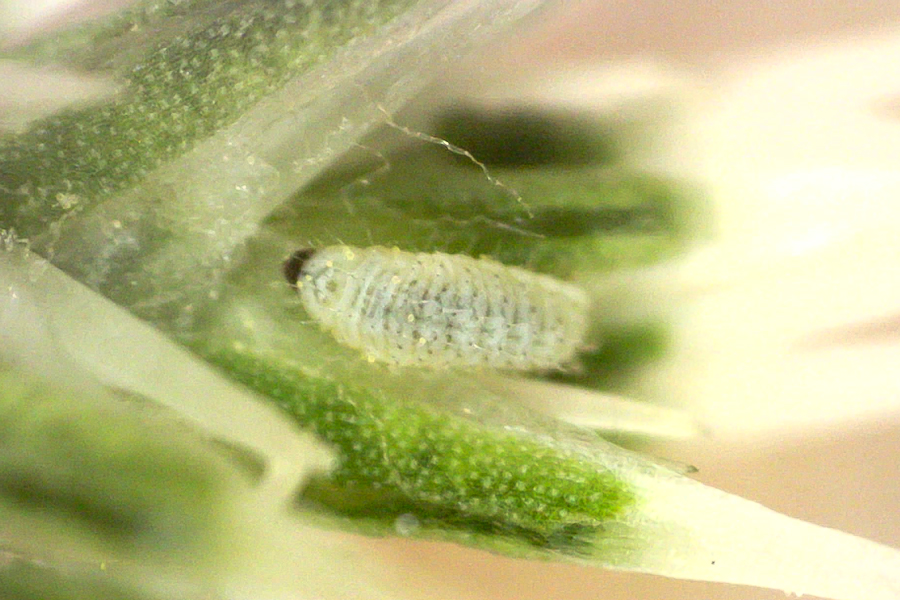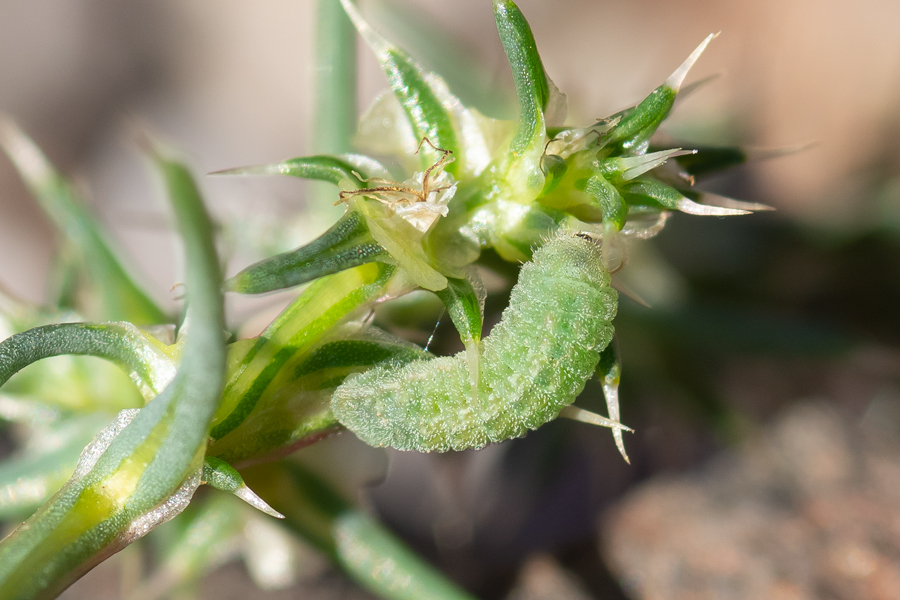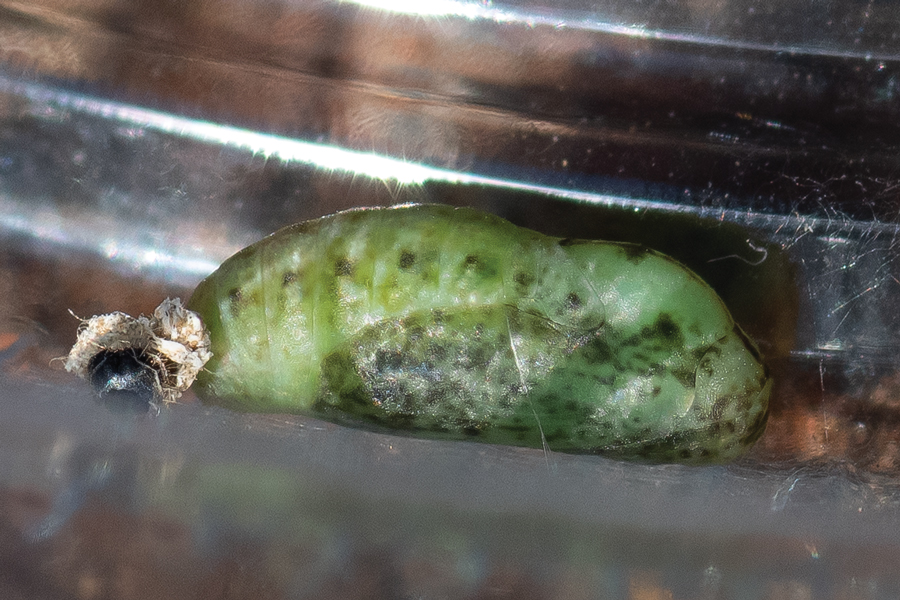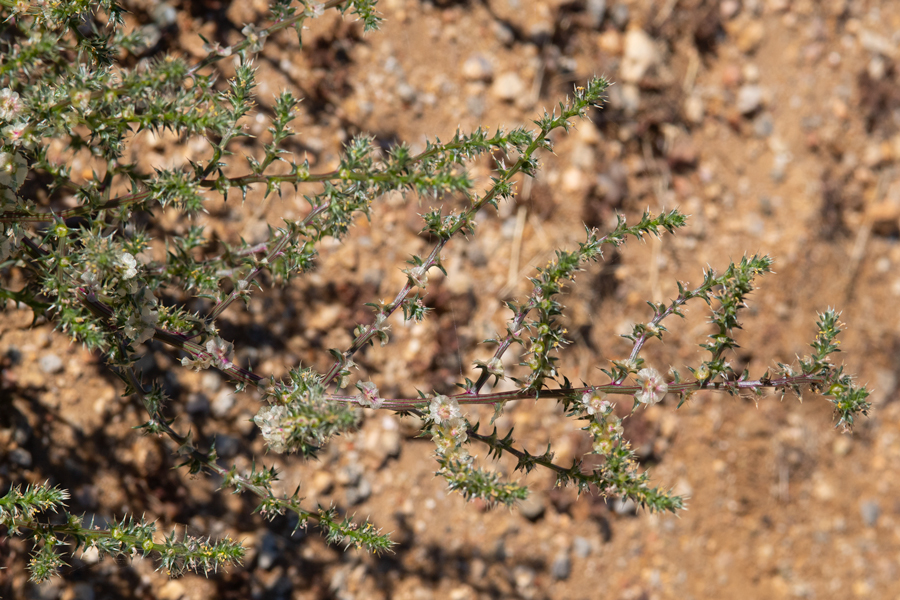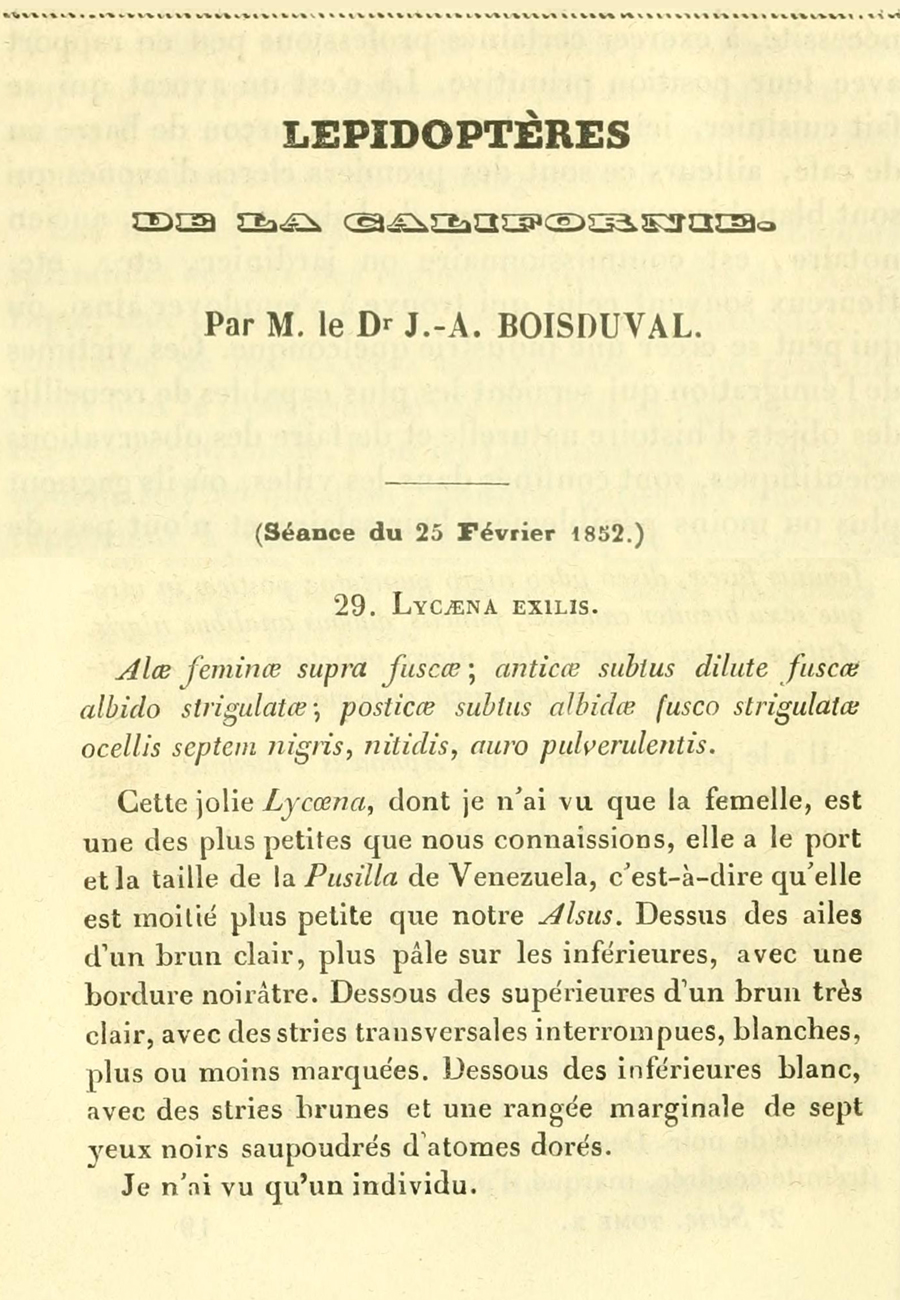Brephidium exilis exilis
Western Pygmy Blue
One of the world's smallest butterflies, this little blue may be found almost anytime in certain desert environments. It's a butterfly of Mexico and the southwestern U.S., feeding on the leaves, flowers, and fruits of a variety of plants, mostly in the Chenopodiaceae (goosefoot) and Aizoaceae (iceplant) families. Favorites include several species of saltbushes (inc. Atriplex canescens and lentiformis); species of Suaeda; russian thistle (Salsola tragus); and western sea purslane (Sesuvium verrucosum). This is an attractive butterfly when seen close up, but it's easily overlooked due to its size. I tend to see it most often in the deserts, but I've seen it in the mountains around Big Bear as well. In 2023 I was able to rear one from egg to adult as documented below.
Brephidium exilis, flying around saltbush at Scissors Crossing. September 28, 2013.
A western pygmy blue, Brephidium exilis, from Malibu Creek, September 15, 2005. These are tiny - the smallest butterfly in North America. An easy place to find them is around saltbush at Bolsa Chica in Orange County.
Western pygmy blue from Yaqui Well, Anza-Borrego, on October 13, 2005.
Another ventral of the western pygmy blue from my backyard in Long Beach. October 24, 2015. I can count on one hand the number of times I've seen these in my garden.
This egg was placed by a female I was watching on russian thistle, Salsola tragus. This was at Cactus Spring Trail on October 8th, 2023. Magnified approx. 230x. The spiral pattern is very fine and uniform, unlike some other lycaenid eggs. This egg is almost exactly 0.5 millimeters across.
This larva hatched out of a different egg on the same plant as the egg above, and is about two days old. It was 1.4mm long. October 11, 2023. I hope to keep it going, but these can be tough to rear.
On November 3rd, 2023, the above caterpillar is now a fourth (and final) instar. I've been giving it fresh Russian thistle about every other day.
Three days after the above, a chrysalis. It attached itself to the lid of the plastic container I was using, shed its skin (seen at left with headcase), and now looks like this. The adult emerged in about ten days.
A better look at Russian thistle, Salsola tragus. This plant becomes tumbleweed.
Boisduval received this butterfly from California - probably Sacramento acc. to John Emmel - and described it (as Lycaena exilis) in 1855 in the journal Annales de la Société entomologique de France. He says he'd only seen one female.
©Dennis Walker
